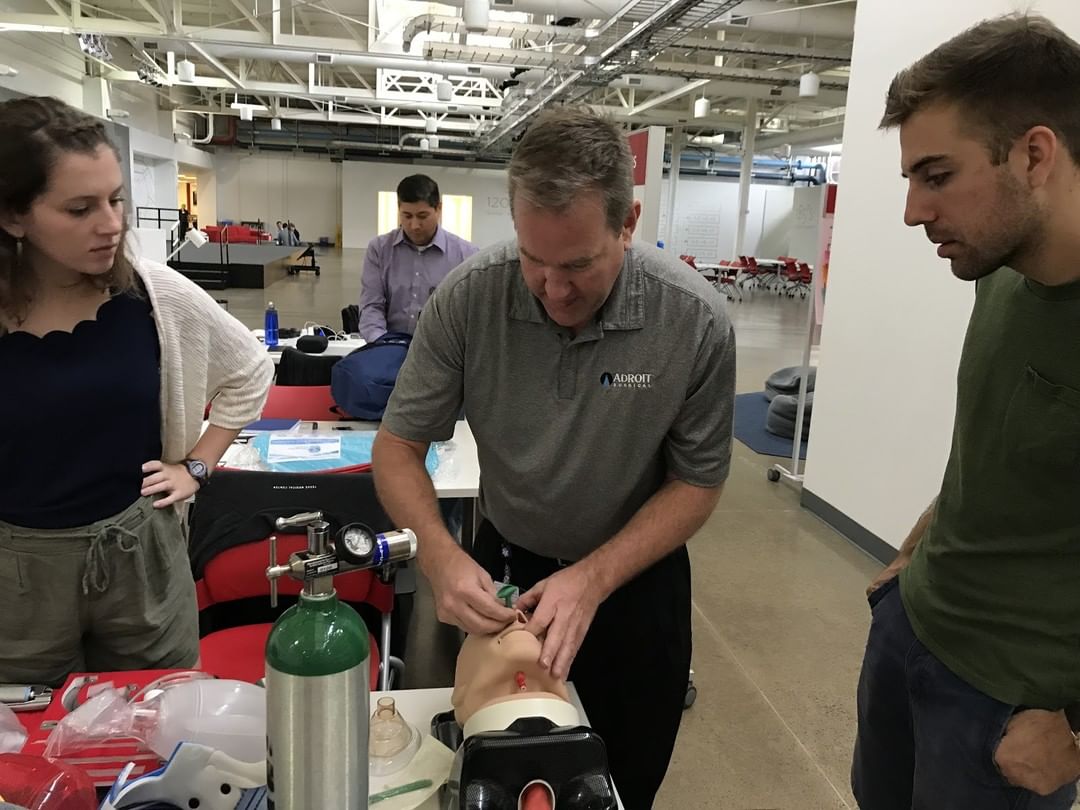Client | Ben Taub County Hospital
Location | Houston, TX
Bag-valve-mask (BVM) ventilation, or manual resuscitation, is used in emergency settings where the patient requires respiratory assistance. It is often used by EMS personnel before the patient even reaches the hospital. Despite the fact that it is used frequently in life or death situations, the bag-valve-mask has remained a remarkably simple design consisting of a face mask, an inflatable bag, a one-way valve, and an oxygen source, as seen below.
BVM ventilation is taught to emergency medical personnel, doctors and nurses, but is an underratedly difficult procedure to perform. The mask must cover the mouth and nose and it must seal fully to the face in order for the oxygen to effectively enter the airway. Simple variations in face shape and facial hair can make it almost impossible to get a good seal. Another frequent complication of BVM ventilation is the manual ventilation that should be delivered to the patient at a steady rate of about 8-10 breaths per minute. In life or death situations where it can be difficult to remain calm and steady, the bag is often compressed at too fast a rate, resulting in hyperventilation of the patient.
The bag-valve-mask is a frequently used, lifesaving, low cost medical device, but only about 10% of clinicians are able to perform BVM ventilation successfully. Karlee and Chandler’s need statement changed throughout the year, initially focusing on providing sensory feedback to the emergency medical technician and decreasing the time it takes to perform a good seal. It changed to focus on reducing errors and improving the delivery and rate of ventilation for patients. The design changed from a face mask to a nasal mask. I think that the design shift that Karlee and Chandler made at the end of the year was brave and smart. It can be disappointing to feel like you are going back to the beginning after working hard to get to what feels like a solution. However, the pivot they made helped them better address both under ventilation from a leaking seal and hyperventilation from over pumping the bag directly into the airway. In the next few weeks, I plan to continue with my own research and speak with Karlee and Chandler to ask and understand:
- What is the “obstruction” condition and how does it differ from any emergency situation when a bag-valve-mask is being used? Are there situations when a BVM is being used, but the airway is not obstructed?
- Does delivering feedback to the person performing BVM ventilation increase success rates?
- As this is currently a low-cost device, is it used the same way and does it have the same success rates in low resource environments?
- Were you able to watch BVM ventilation in either emergency or training settings?
- Were there specific technical skills you felt were important in tackling this project (software programs, CAD, mechanical skills, etc.)?
The value of this device very clearly exceeds its monetary cost. I am greatly looking forward to developing an easier to use, more consistent BVM to save patient lives and allow EMS personnel to focus on other procedures in high stress, emergency situations.

